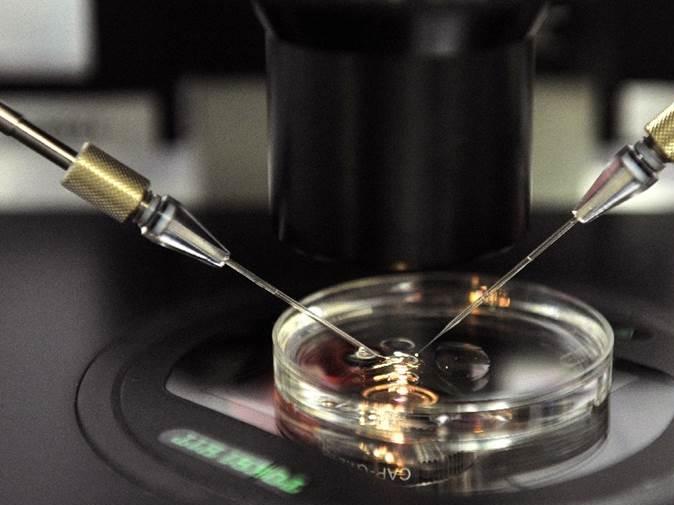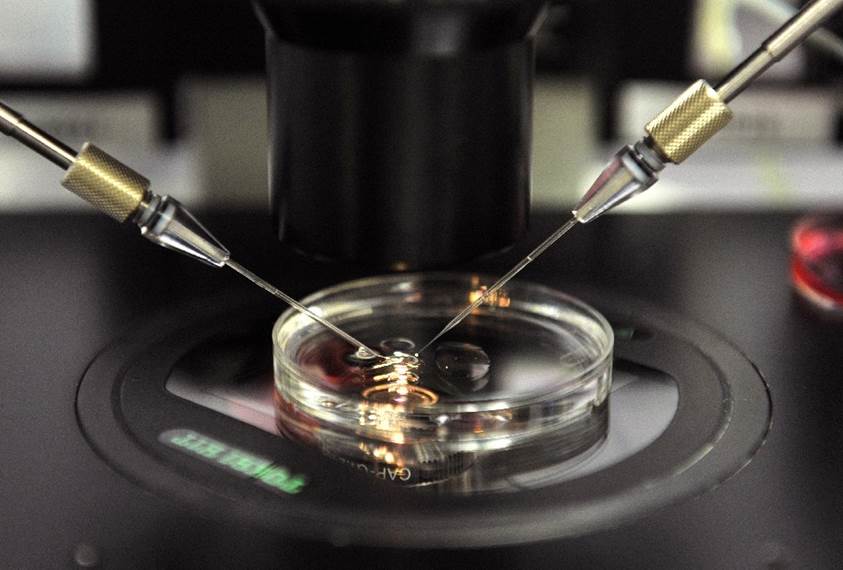
爱语导读:周三,西班牙科学家宣布他们成功地用皮肤细胞培育出人类精子。这项医学成就最终能够用于治疗不育症。

Scientists in Spain on Wednesday they had created human sperm from skin cells, a medical feat which could eventually lead to a treatment for infertility.
周三,西班牙科学家宣布他们成功地用皮肤细胞培育出人类精子。这项医学成就最终能够用于治疗不育症。
The researchers said they were working to find a solution for the roughly 15 percent of couples worldwide who are unable to have children and whose only option is to use donated sperm or eggs.
研究人员们表示,世界上大概有15%的夫妇无法生育,只能依靠捐赠精子或卵子来生育,而他们一直为解决这些夫妇的问题而做出努力。
"What to do when someone who wants to have a child lacks gametes (eggs or sperm)?" asked Carlos Simon, the scientific director of the Valencian Infertility Institute, Spain’s first medical institution fully dedicated to assisted reproduction.
西班牙瓦伦西亚不孕不育中心的科学主管卡洛斯·西蒙问道:“当无法产生配子(精子或卵子)的人们想生育后代时,他们该怎么办呢?”该机构是西班牙首个致力于协助人们生育的机构。
"This is the problem we want to address: to be able to create gametes in people who do not have them."
“这是我们想要解决的难题——我们希望能够帮助人们制造配子。”
The result of their research, which was carried out with Stanford University in the United States, was published Tuesday in Scientific Reports, the online journal of Nature.
他们的研究和美国斯坦福大学进行了合作。而研究成果在周二于《自然》的在线杂志《科学报告》出版。
They were inspired by the work of Japan’s Shinya Yamanaka and Britain’s John Gordon who in 2012 shared a Nobel prize for the discovery that adult cells can be transformed back into embryo-like stem cells.
他们受到日本科学家山中申弥和英国科学家约翰·戈登的启发。这两位科学家凭借发现人类细胞能被还原成胚胎干细胞而共同获得2012年诺贝尔奖。
Simon and his team managed to reprogramme mature skin cells by introducing a cocktail of genes needed to create gametes.
通过加入一系列制造配子所需的基因,西蒙和他的同事们成功地对皮肤细胞进行了重新编码。
Within a month the skin cell was transformed to become a germ cell, which can develop into sperm or an egg, but it did not have the ability to fertilise, they found.
他们发现,在不到一个月的时间后,皮肤细胞转换成了一个生殖细胞。该生殖细胞能够分化成精子或卵子。但是它无法受精。
"This is a sperm but it needs a further maturation phase to become a gamete. This is just the beginning," Simon said.
西蒙说:“这个精子需要更多的成熟期来成为配子。这仅仅是个开始。”
It is a step further than that reached by Chinese researchers who earlier this year announced they had created mice from artificial sperm.
这次成就的价值超过了今年年初中国科学家在通过人工精子而制造的老鼠。
"With the human species we must do much more testing because we are talking about the birth of child," Simon said.
西蒙表示:“鉴于我们在探讨一个孩子的诞生,我们应该对更多人进行测试。”
The researchers also must take into account legal constraints since the technique involves the creation of artificial embryos which right now is only allowed in some countries.
研究人员们还需要考虑法律上的限制,因为这种技术涉及到创造人工胚胎,而人工胚胎只在一些国家得到了许可。
"We are talking about a long process," Simon said.
西蒙说:“我们在讨论一个漫长的过程。”



